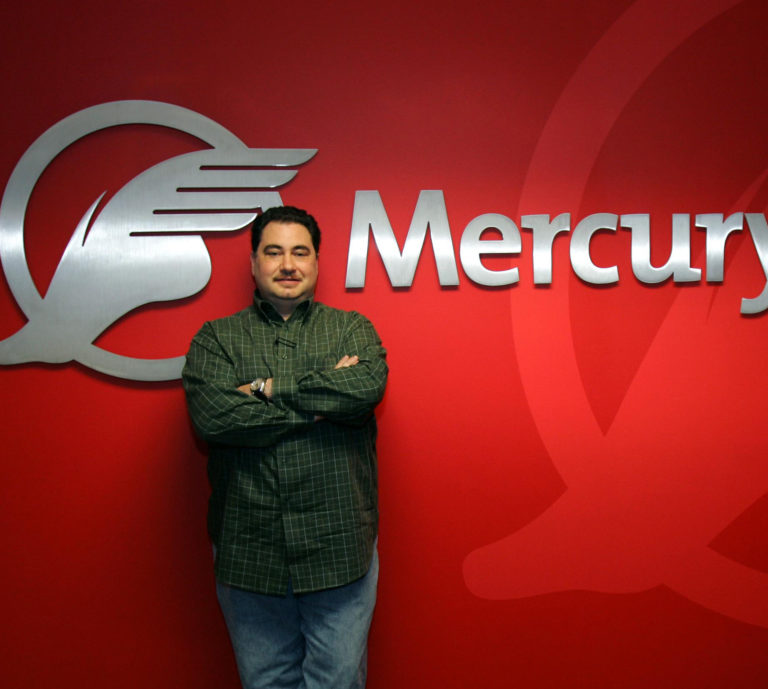
Editor’s Note: This story has been changed from the print version to correct where Suma Visa Prepaid Cards is based.
How do you say “It Slices! It Dices!” in Spanish?
It’s not an academic question: Spanish-language infomercials in Hispanic media, once confined to teach-yourself-English classes, are booming.
A case study is Mercury en Español, a division of Mercury Media in Santa Monica. The division started producing direct-response TV ad campaigns for the U.S. Spanish-speaking market in February 2008. It ended that year with two clients and total revenue of $2 million.
Now, Mercury has 18 clients, selling 25 different products on the air, and a total revenue of more than $20 million.
Marcelino Miyares, director of Mercury en Español, said the longtime Hispanic cultural distrust of buying over the phone and paying with a credit card are quickly fading away.
“The Hispanic market is different than five years ago in terms of the ability to pay for products,” he said. “There is now a critical mass of credit card customers.”
Miyares grew the operation by cherry-picking brands from Mercury Media’s extensive list of clients in English-language TV, and then convincing these established customers to try Spanish-language TV. His first two products were a Conair curling iron and the Magic Bullet blender. Mercury taped new commercials in Spanish and then tested them on Spanish-language networks Univision and Telemundo, as well as on individual TV stations and cable channels.
Both campaigns proved profitable.
A comparison of these and other Spanish campaigns with their English equivalents soon convinced other marketers to try the experiment.
Meanwhile, however, Miyares thinks Mercury en Español isn’t even getting credit for all the sales it generates. When a company advertises in Spanish, its sales increase in English. Miyares believes that’s because many bilingual Hispanics hear the ad in Spanish, but instead of calling the 800 number, they go online and complete the transaction in English.
The most popular products in the Spanish-language infomercial world are similar to those in English: beauty products, followed by health supplements, kitchen gadgets and home-improvement tools.
That said, the Spanish-language audience doesn’t spend as much. The average purchase related to a direct-response TV ad in Spanish is $129 to $169, depending on the product category. In English, it’s generally more than $200.
Close the sale
Today, Mercury en Español has 11 employees, a small division of parent Mercury Media with 130 employees. It is located in a midrise glass office tower in Santa Monica.
Mercury tried to enter Spanish TV several years earlier with a dental-care client and flopped. But when Mercury en Español launched, it took over responsibility for the call centers that actually make the sales. It was important to close a sale when a customer called, and that hadn’t been happening. There were significant hurdles.
“First, financing issues – low credit card penetration, COD and credit limits on cards,” Miyares said. “Second is call center capacity. I don’t have enough skilled operators to handle all of the calls I generate. But these represent opportunities, not barriers, because they are both fixable.”
So how will he address the problem of the credit card financing among his audience?
One of Mercury’s newest clients is Suma Visa Prepaid Cards, Mission, Texas-based debit card company with Los Angeles operation that targets Hispanics. It launched in November. The card is only available through direct-response TV ads managed by Mercury en Español.
Gaston Pereira, partner and founder of Suma Cards, said a lot of people get the cards so they can make purchases online or through direct-response TV ads, or for remittances to Mexico and Central American countries.
“The card allows them to become part of the plastic economy,” Pereira said. “I hear a lot of the calls and they want the card to buy online or on TV, or to send money home.”
Challenges remain. Robin Behar, partner at direct-response consulting firm In Clover Marketing in Agoura Hills, said not all products translate well from English. For example, so-called intellectual property products – self-improvement tapes or real estate and investment courses – just don’t sell in Hispanic culture. Even in other categories, the specific product or price point might not connect with Hispanic viewers.
“I’m sure a company like Mercury sits down with its clients and considers carefully before launching a product in Spanish,” Behar said.
Also, Behar emphasized that Hispanic customers will need the same or more support in Spanish that English-speaking customers receive, so companies should include those costs in their budget.
“You have to look at packing slips, manuals, update notices, websites, customer service – and they should all be in Spanish,” she said. “If you advertise and take orders in Spanish, but then expect them to speak English, you miss the opportunity to build long-term customers.”
Future en Español
Miyares predicts growth for his company in 2011, based in part on Hispanic population growth and a new shipping service.
By 2015, the U.S. Census Bureau projects that the Hispanic population in the United States will grow to almost 58 million people, or 18 percent of the U.S. population, up from 12 percent now. Hispanic disposable income is predicted to reach $1.83 trillion, up from a current level of $1 trillion, according to research firm Global Insight.
Meanwhile, Miyares is testing a service that will clear up the delivery system of products ordered on TV. Hispanics who don’t have a credit card often pay with money orders or collect on delivery. Marketers have found that many products – as much as 70 percent of those mailed via COD – come back because a purchaser has second thoughts.
But Miyares has contracted with a service called Hispanic Logistics that guarantees delivery. He believes this will add 10 percent to 15 percent to the return on campaigns.
“I am pretty sanguine about the future,” Miyares concluded. “For the last eight weeks, response levels have increased and we are gaining more clients in test phase.”
